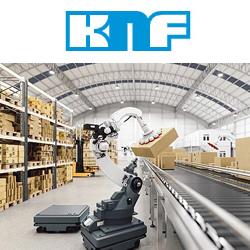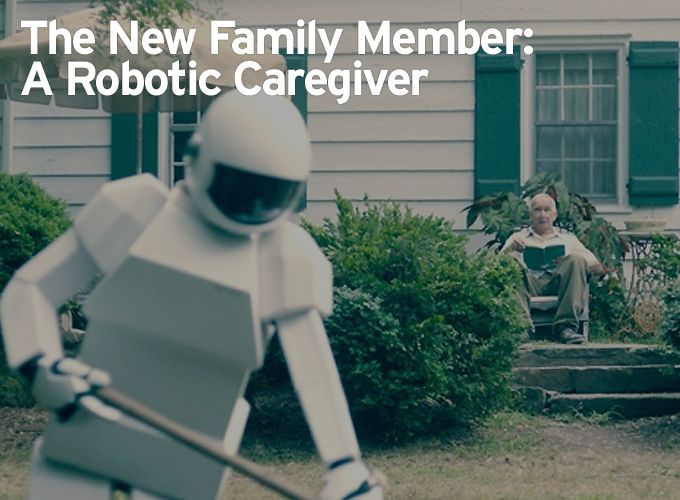The issue of nursing care in an ageing society is a major social concern and will continue to be so. Therefore, we can expect to see robotic devices become the caregivers of the future.
Len Calderone for | RoboticsTomorrow
Baby boomers are starting to retire, and as they do, we will see an increase in the need for caregivers. Over 10,000 Americans are turning 65 every day, and the country will soon boast more citizens over 60 than under 16. The problem is that there is a shortage of caregivers. Therefore, the care of elderly family members will fall on their children, who could be overwhelmed by the task.
Even more troublesome is the fact that many adult children live far away from their parents or are too pressed for time to check on their parents as frequently as they want or need to. Home healthcare is expensive, averaging $19 an hour.
There are many needs that need to be addressed as the population grows old. Sickness seems to follow aging and some patients will need continuous care. We humans can't maintain such a schedule for long without becoming a patient ourselves; but since a robot doesn't need sleep, it would always be alert and available in case of crisis.
A robotic caregiver can handle the laundry and household chores, while the patient is sleeping; and when the patient awakens s/he would be greeted by a kind, humanlike voice. If the patient is ambulatory, the robot can assist with getting the patient moving. Many elderly patients take multiple medicines, allowing for mistakes in taking the right doses at the right time. A caregiver robot could make sure that all medicine requirements are met. For those with failing eyesight, the robot could read to them.
Caregivers may soon have help getting patients in and out of bed—one of the most strenuous and injury inducing parts of their day-to-day job—thanks to a robotic bear named Robear, which was designed by scientists from Sumitomo Riko Company in Japan. The robot is capable of lifting patients out of bed and into wheel chairs or aid patients who need assistance walking.
The 308 pound robot is the newest addition to RIKEN-SRK’s line of RIBA robots. Their latest model is lighter than previous models and features a series of sensors that keep the robot’s touch light and sensitive instead of jarring. A series of actuators allow the robot to have all of the strength required to lift a person as well as the gentleness needed to keep the patient safe.
In Sweden, researchers have developed an assistant called "GiraffPlus," a humanoid robot that serves as a vacuum cleaner, standing mirror, a video-chat android that stands in for family time and doctor visits, and a health metrics monitor that can measure and record key variables such as blood pressure and temperature.
Giraff consists of a network of sensors which can measure blood pressure or detect if someone falls. The data is then interpreted in terms of activities, health and well-being, such as if the person is relaxed or needs to go to bed. Events can trigger alerts or reminders to a healthcare provider. Giraff is a telepresence robot that can move around the home while connecting online with a caregiver or family member.
The researchers at the University of Hertfordshire have been working on a social robot that collaborates with caregivers and relatives to support the elderly so that they can maintain an independent life. This type of mobile service robot can be helpful in home and community care environments where they perform simple tasks for elderly users, such as providing mobility support and fetching or carrying items.
What makes these robots unique is that they are not only focusing on physical assistance but also on social assistance. By offering stimulating activities and engaging in empathic interaction, they increase social connectivity, preventing social isolation and loneliness.
Their Care-O-bot 4 is programmed to be charming, to express emotion, and to follow the rules of etiquette. The objective is to remove the cold exterior of a robot by introducing empathy, using simple gestures and emotions. To accomplish this, a set of cartoon-like eyes were developed, which appear on the LCD display. The robot is programmed to use these eyes to show expressions related to the circumstances. If someone has forgotten to take their medication, the eyes will look sad and then the robot will explain why.
There is a lot that has to be done around the home besides take care of the individual. To do this, the Home Exploring Robotic Butler (HERB) was created to efficiently map, search, and navigate through indoor environments, as well as recognize common household objects, and perform ordinary functions.
HERB was developed jointly by Intel Research Pittsburgh and Carnegie Mellon University to handle complex manipulation tasks, such as carrying pitchers without spilling them. HERB can search for objects, differentiate movable and immovable items in its environment, recognize common objects, and grasp and carry constrained items.
A bed bath, where a nurse or family member uses a soapy sponge to clean off a patient's skin, can actually be an awkward social situation, making both the caregiver and patient feel uncomfortable. Having a robot carry out hygiene tasks offers huge advantages. Patients are given greater privacy and independence, and nurses and caregivers who find the bed baths embarrassing are provided relief.
Cody is a robotic nurse designed to give baths to the elderly. The team at the Georgia Institute of Technology designed a robot, which is programmed to apply gentle pressure while washing a patient, as a solution both to the embarrassment of receiving bathing help from another human as well as to the anticipated increase in demand for nursing services for the elderly.
Cyberdyne (not the company in the Terminator films) has developed the Hybrid Assistive Limb (HAL), which is a robotic exoskeleton that could greatly improve the mobility of elderly or disabled people who wear it.
HAL is expected to be widely used in various applications including support to assist the mobility of the elderly with muscle weakness and people with impaired motor function.
HAL does not just use the concept of power assist; it is a hybrid system composed of a cybernics voluntary control system that provides complete control of the HAL suit using bioelectric signals and a cybernics robotic autonomous control system that autonomously generates motor patterns reflecting characteristics of human motion. It is the world's first cyborg-type robot that takes advantage of cybernics that integrate human, mechanical and information technologies.
The issue of nursing care in an ageing society is a major social concern and will continue to be so. Therefore, we can expect to see robotic devices become the caregivers of the future.
|
Len Calderone - Contributing EditorLen contributes to this publication on a regular basis. Past articles can be found with an Article Search and his profile on our Associates Page He also writes short stores that always have a surprise ending. These can be found at http://www.smashwords.com/profile/view/Megalen.
|
 |
The content & opinions in this article are the author’s and do not necessarily represent the views of RoboticsTomorrow
Featured Product


